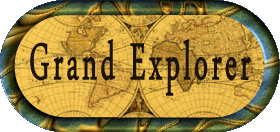This morning I woke up in Amsterdam and had an early start as I bade farewell to the magnificent SS Antoinette and headed out for the airport for my flight to Budapest. The flight was only a few hours and before I knew it I was in Budapest being whisked off to another beautiful Uniworld river boat, the River Beatrice.
This ship is also a luxury river ship and I had a great cabin on the top deck and once again I was fortunate to have all the features associated with Uniworld, the plush towels, the French toiletries and the most comfortable beds complete with soft down-filled duvets and pillows.
When I arrived the cabins were not yet ready so they invited those who had already arrived to a sumptuous lunch onboard. I had a yummy Hungarian goulash with a lovely white wine, that really hit the spot.
When we got our cabins around 3pm I immediately unpacked and set my cabin in order. I decided to take a short nap before I headed out to Budapest in the evening.
Tonight I had a ticket to the Budapest State Opera house for a performance of "La Traviata" which I had been looking forward to for a long time. I had a box seat which was super!
There is nothing quite like attending a performance of a great opera at a world famous European Opera House. Just thinking of the history of those who sat before you hundreds of years ago, is quite overwhelming.
The opera house in Budapest stands as one of the most beautiful Neo-Renaissance buildings in Europe. When it was opened in 1884, the city shared the administrative duties of the Austro-Hungarian Empire with Vienna. In fact, Emperor Franz Joseph commissioned its design. Construction included the use of marble and frescos by some of the best artisans of that era. Designed by Miklós Ybl, one of Europe's leading architects in the mid to late 19th century, the Budapest Opera House quickly became one of the most prestigious musical institutions in Europe.
The Budapest Opera House is considered to be amongst the best opera houses in the world in terms of its acoustics, and has an auditorium that seats 1200 people. It is horseshoe-shaped and, according to measurements done by a group of international engineers, has the third best acoustics amongst similar European venues (after the Scala in Milan and the Paris Opera House). The statue of Ferenc Erkel stands in front of the Opera House. He was the composer of the Hungarian national anthem and the first music director of the Opera. The other statue in front of the Budapest Opera is of Ferenc Liszt, the well-known Hungarian composer.
 We are not allowed to take pictures of the performance but I sneakily got one in but since you can't be obvious about it the shot I got was a bit dark and blurry but it stills gives you an idea of the grandeur of the stage.
We are not allowed to take pictures of the performance but I sneakily got one in but since you can't be obvious about it the shot I got was a bit dark and blurry but it stills gives you an idea of the grandeur of the stage.
La Traviata is a classic opera.... At one of her brilliant supper parties, the beautiful but frail demi-mondaine, Violetta Valéry, meets the well-born Alfredo Germont, and for love of him abandons her feverish life of pleasure. Alfredo’s father intrudes on their idyllic existence in the country and, although realizing her sincerity, persists in his demand that Violetta renounce Alfredo.
Violetta determines to make the sacrifice and departs, leaving only a note for Alfredo. She appears at a ball in Flora’s house on the arm of an old admirer, Baron Douphol, to the fury of Alfredo. The two men play at cards; Alfredo wins consistently. Unable to persuade Violetta to go with him, Alfredo insults her and is challenged by the Baron.
Violetta becomes ill, and all her friends desert her, leaving her virtually penniless. Alfredo at last returns. His father has told him of Violetta’s noble renunciation, and urged him to seek her forgiveness. Overjoyed at the sight of him, Violetta attempts to rise. But it is too late. As Germont and the doctor enter, Violetta dies in Alfredo’s arms.
After the performance I returned to the ship with some happy memories.
The ship was docked in Budapest for the night and is scheduled to sail tomorrow night.
The ship has a great self-serve coffee station which is open 24hrs. a day. You can get several kinds of coffee like Cafe Latte, Cappuccinos, Mokachinos etc and the best of all is the hot chocolate. I got myself one of those luscious hot chocolates and took it back to my cabin. It was a nice treat before bedtime.
After a hot shower I went to bed earlier than normal to be in top shape for the following day of exploring.





























.JPG)
.JPG)
.JPG)

.JPG)
.JPG)
.JPG)
.JPG)















